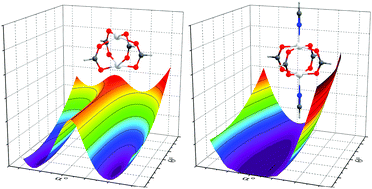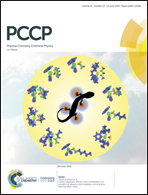Understanding structural flexibility of the paddle-wheel Zn-SBU motif in MOFs: influence of pillar ligands†
Abstract
Structural parameters and energies of secondary building units (SBUs) in Zn2(C8H4O4)2·C6H12N2 have been examined with DFT and CCSD(T) methods. The SBU structure exhibits flexibility due to close energies of formation of its D4h, D4, and D2d forms. The potential energy surfaces (PESs) calculated for these systems testify that the presence of pillar ligands with negatively charged nitrogens (NCH or DABCO) can lead to almost barrier-free transitions between structural SBU forms. The mobility regions of the SBU motif have been determined.



 Please wait while we load your content...
Please wait while we load your content...